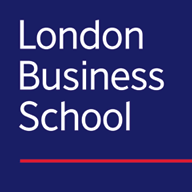Aminadav, Gur (2018) A study of corporate ownership and control around the world. Doctoral thesis, University of London: London Business School.
Abstract
This thesis is structured around three main chapters which study corporate ownership and control around the world. The first chapter is based on my work with Yoram Bachrach, Konstantin Kosenko, Jeffrey S. Rosenschein and Yoav Wilf in which we provide a nouvelle method for identifying control relations in complex ownership structures. We apply weighted voting games literature as a theoretical framework and use the Shapley-Shubik power index to determine control rights. Our method performs a simultaneous analysis of both the specific ownership map within the corporation and the corporate network in which the firm is embedded. Overcoming hard computational challenges, we implemented our algorithm into a computer program that can effciently analyse big complex datasets of corporate ownership and identify control relations. The second chapter is based on my work with Elias Papaioannou. We describe the patterns of corporate control and ownership in a dataset covering more than 45; 000 listed firms from 127 countries over 2004 - 2012. Employing a plethora of original and secondary sources, big data techniques, and applying the Shapley-Shubik algorithm we trace ultimate controlling shareholders. First, we document considerable and persistent heterogeneity in corporate control and ownership concentration, and that the recent global financial crisis did not affect them much. Second, we find economically large differences in ownership and control patterns across legal families. In particualr, that government and family control are pervasive in civil-law countries, and that equity blocks in widely-held corporations are commonplace, but less so in common-law countries. These patterns apply to large, medium, and small firms. Third, the link between underdevelopment and control applies solely to large firms. Fourth, we examine possible underlying mechanisms, and find that shareholder rights against insiders' self-dealing activities matter crucially to control and ownership concentration, though legal formalism, creditor's rights, or product market regulation do not. Finally, we find that corporate control is strongly related to labour market regulation. In the third chapter I investigate the relation between ownership structure and the presence of informed traders, liquidity and idiosyncratic volatility, focusing on business groups affiliated listed firms. I develop a measure called centrality which intends to capture the potential loss of private benefits of control. My analysis indicates that central firms experience support from the group in bad times, and I argue that this limits the informational advantage of informed investors. I show that centrality is negatively related to the informational content of short sales, to their profitability and to their intensity. Furthermore, the liquidity of central firms is higher, and their idiosyncratic volatility is lower compared to non-central firms.
More Details
| Item Type: | Thesis (Doctoral) |
|---|---|
| Subject Areas: | Finance |
| Date Deposited: | 10 Feb 2022 10:18 |
| Date of first compliant deposit: | 10 Feb 2022 |
| Subjects: |
Share ownership Public companies Corporate governance Theses |
| Last Modified: | 16 Feb 2022 12:38 |
| URI: | https://lbsresearch.london.edu/id/eprint/2257 |
Export and Share
Download
Published Version - Text
- Embargoed until 31 July 2028
- Restricted to Repository staff only
- Request a copy

